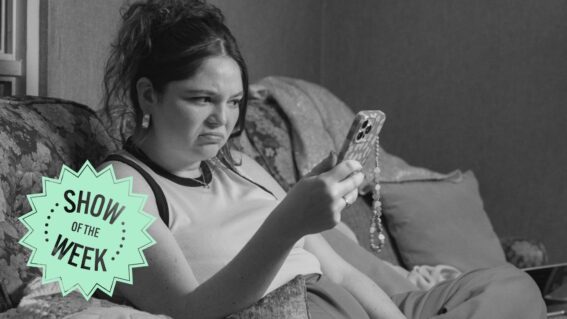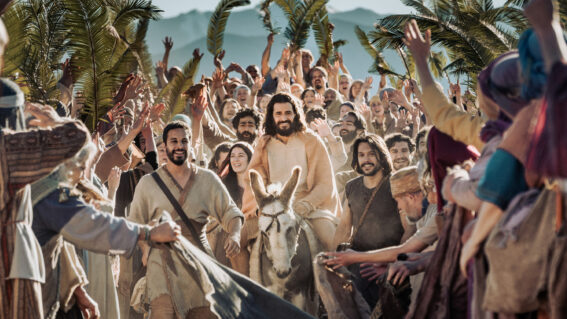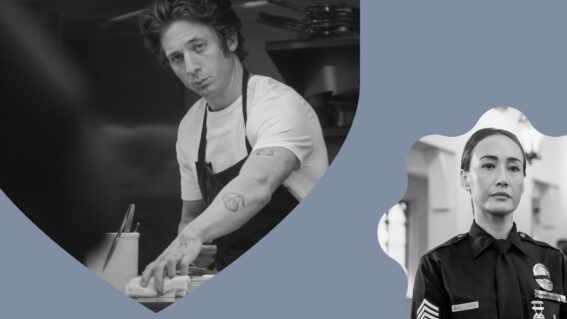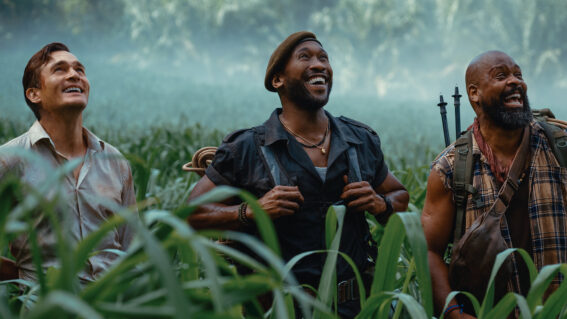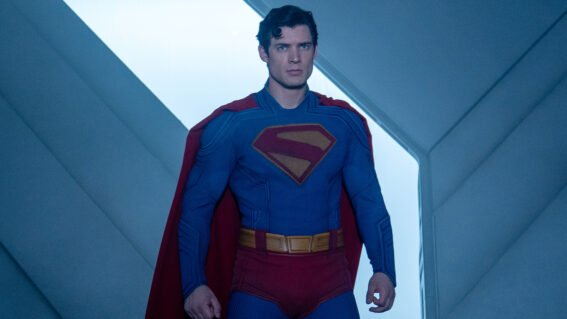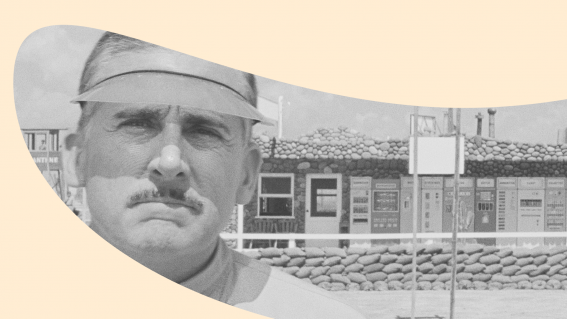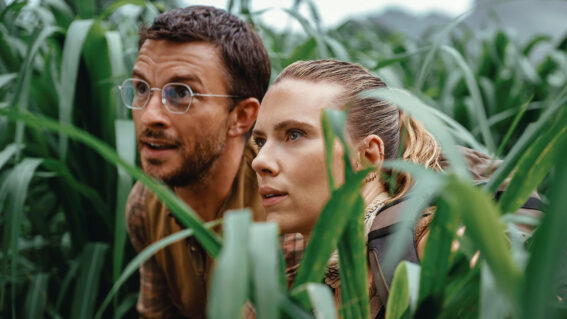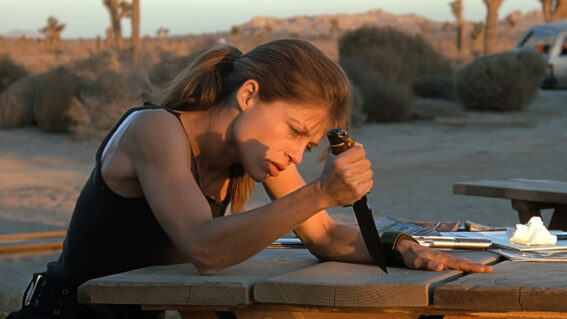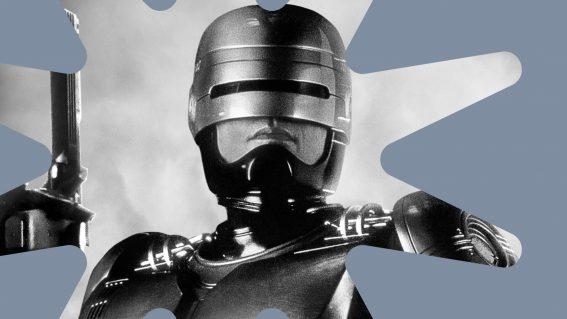5 of the best action movie scenes on trains
Mission: Impossible 7 and Indiana Jones 5 inspire us to choo-choo-choose the greatest locomotive moments in cinema.
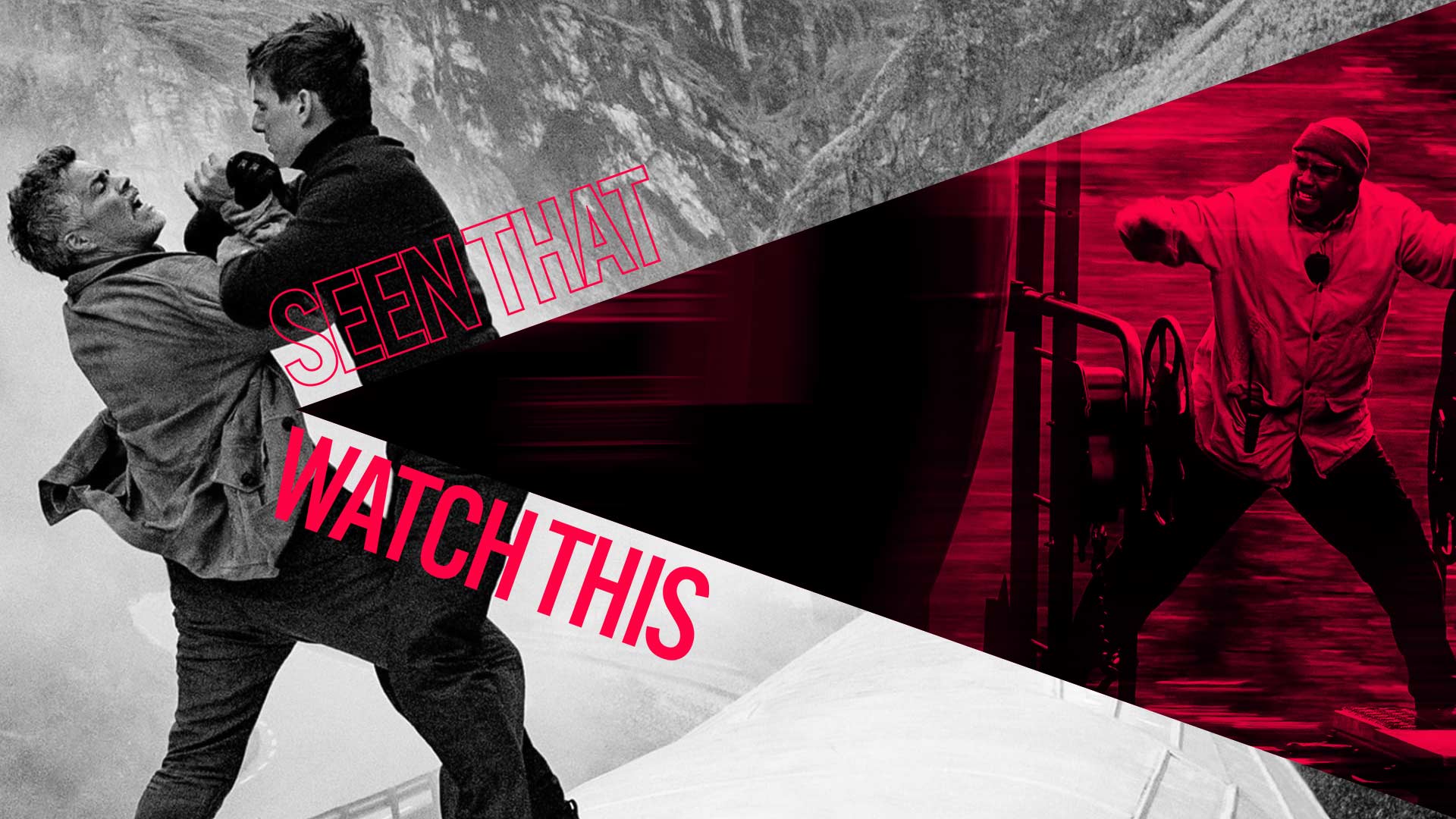
Seen That? Watch This is a fortnightly column from critic Luke Buckmaster, taking a new release and matching it to comparable works. This week, inspired by Ethan Hunt and Indiana Jones’ latest adventures, he revisits the greatest action scenes baed on (and around) trains.
Two recent blockbusters have returned iconic Hollywood heroes to the big screen, partaking in the sorts of activities we expect from them—i.e. pursuing precious objects and performing death-defying stunts. Part of the latter, in both Mission: Impossible – Dead Reckoning Part One and Indiana Jones and the Dial of Destiny, involve the protagonists blazing through environments at face-melting speeds, riding on board very fast trains (coincidentally, both films’ train scenes were shot on the same tracks).
And, I should add, riding on top those trains. Old mates Ethan Hunt and Indiana Jones belong to a long lineage of cinematic risk-takers who have no problem hopping above a train and running along it: the quintessential “don’t try this at home” stunt. Whenever we watch a new action scene involving a train, we witness cinema return to its origins. One of the first films ever made depicted a train (more on that below), as did 1903’s The Great Train Robbery, one of the first narrative films.
Motion pictures have stopped at many stations since then, tearing down the tracks of history, powered by the engine of…OK, I’ll stop with the train metaphors. Below are five of the best action scenes based on trains. Buy the ticket, take the ride.
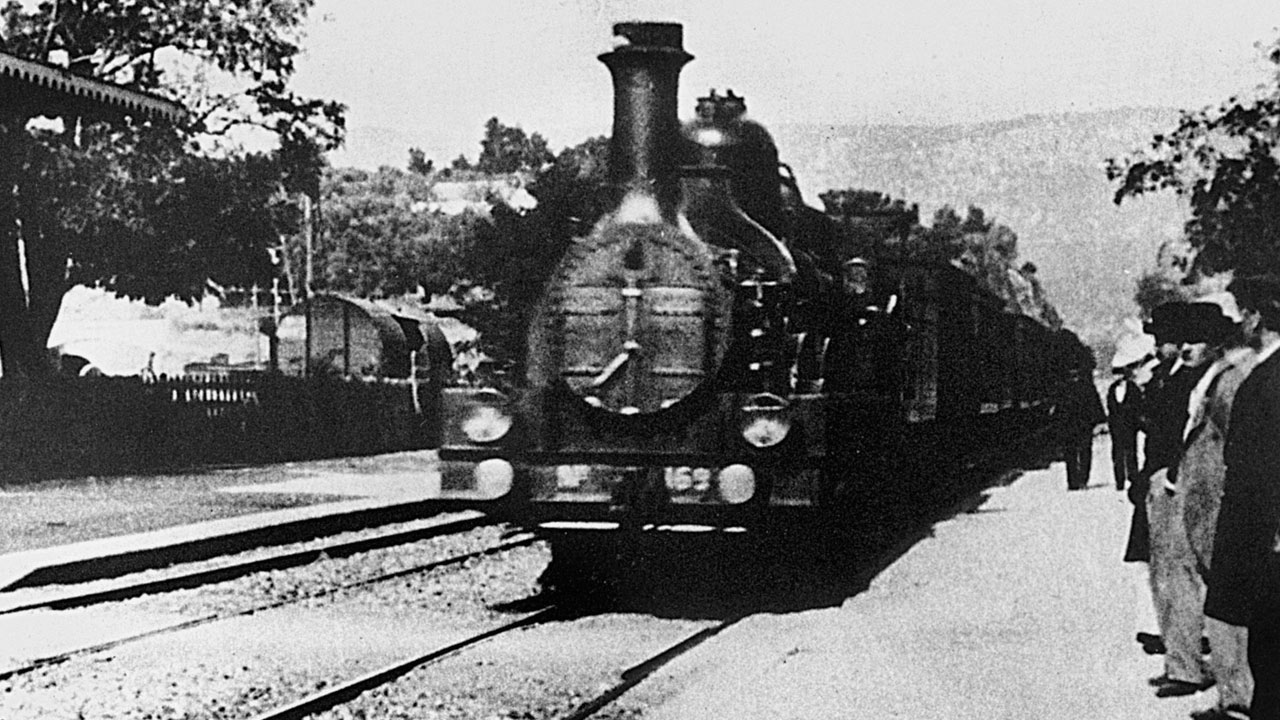
The Arrival of a Train at La Ciotat Station (1895)
WATCH ON YOUTUBEWe go back, as they say, to the very beginning. The Lumière brothers’ very famous film, capturing a steam locomotive arriving at the titular location, was among the first motion pictures, dazzling audiences with a then-cutting edge, gasp-inducing technology. This was prior to the establishment of film’s grammar and syntax, so of course this fixed 50 second shot isn’t stylistically interesting these days. But the story around it is a fascinating example of history becoming legend, then legend turning back to history.
For many decades it was believed that viewers who watched the film in the 1800’s were so startled by the sight of a train barrelling towards them that they screamed and ran from their seats. It wasn’t until early in the 21st century that this account was seriously debunked, scholar Martin Loiperdinger describing the audience’s behaviour as a “generally agreed-upon rumour.” Other historians agreed, recasting the audience’s response as, in all likelihood, more an awareness or appreciation of film’s illusionistic capabilities than a childlike belief that they were actually in danger. Needless to say: action cinema was born!
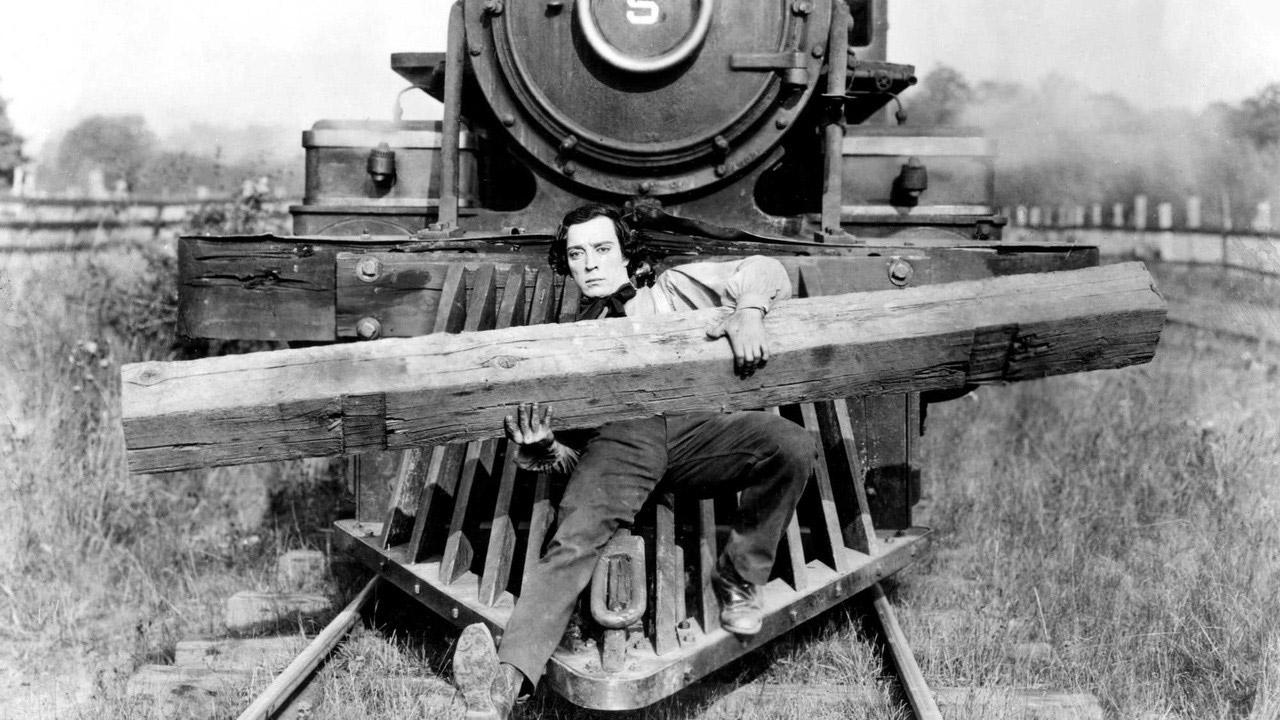
The General (1926)
The “scene” here is the majority of the movie: a strung-out, marvellously paced escapade capturing an engineer, Buster Keaton’s Johnny, chasing a stolen train, which he reclaims before the tables are turned and he himself becomes chased. Taking control of the titular locomotive, Johnny, on the side of the Confederates during the Civil War, must fang it back to base to warn the army of a surprise attack. Most importantly, for him, he’s gotta get the girl or die trying. Enter Marion Mack’s Annabelle, who is no damsel in distress: more a quick-thinking co-hero, fast to her feet and resourceful.
But Keaton of course is the man of the hour, painting his masterpiece by way of dodging beams and riding on a cowcatcher. While his wildly influential contemporary Charlie Chaplin had a more expressive and emotive style, the stony-faced Keaton leaned heavily on sets and architecture, creating ingenious interplay between his body and the elements around him. Almost a century later, The General remains the greatest of all train movies, seeing the locomotive not as a setting per se but a playground for dramatic and comedic possibility.

The French Connection
The centerpiece scene in William Friedkin’s deservedly revered classic is based both on a train and below it, with Gene Hackman’s detective Doyle behind the wheel of a car tearing after said train on an elevated track. The sequence commences when Doyle arrives at the right station to apprehend French assassin Nicoli (Marcel Bozzuffi). But, wouldn’t you know it, he’s on the wrong side of the tracks. Friedkin forks the sequence, alternating between Nicoli and Doyle. The former pushes forward through the carriages, shooting a police officer and heading towards the driver, the narrowness of the vehicle condensing the drama.
On the ground the action is more frenetic, Doyle desperately weaving through the city in pursuit. Some images are presented from the car’s POV; others combine the train, the car and Hackman in the same shot—which must’ve been a challenge logistically (occupational health and safety, as Friedkin subsequently acknowledged, was non-existent). The scene is so well staged, its peaks and troughs so smartly calibrated, it often appears on lists of the greatest car chase sequences of all time. But don’t forget the train!
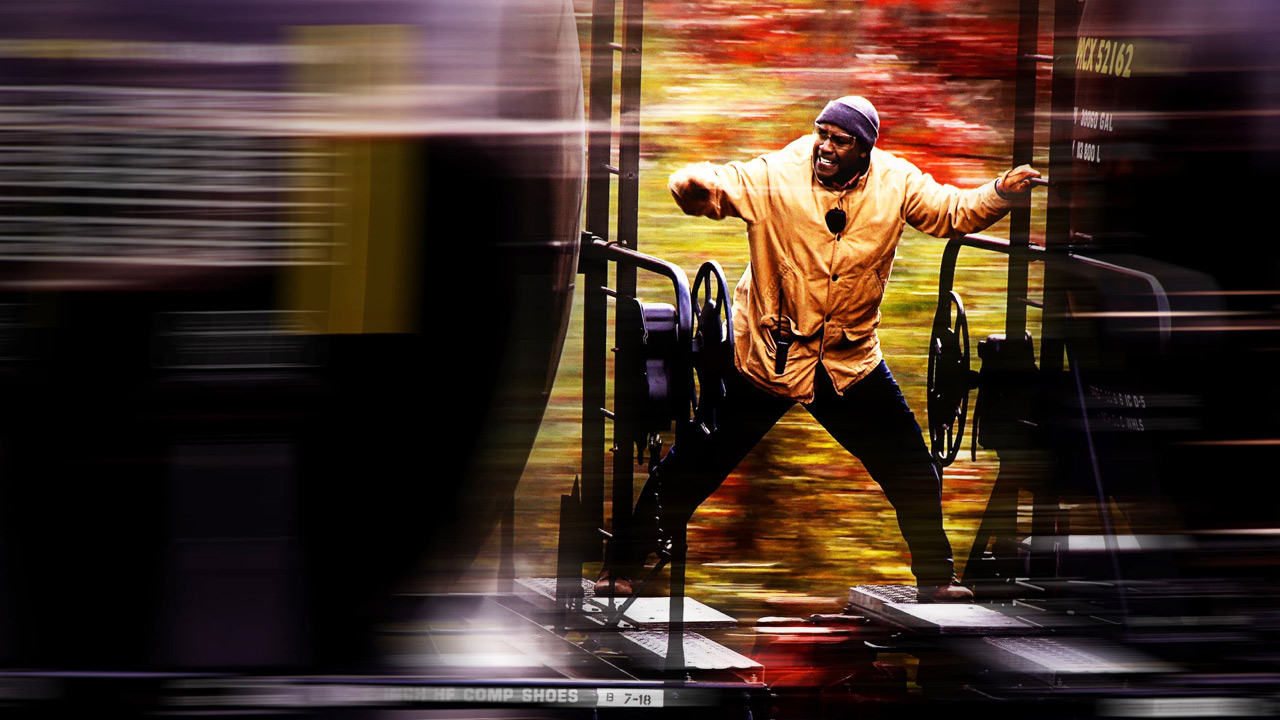
Unstoppable (2010)
I love the force and momentum of this film; I love that the train is the villain. Action auteur Tony Scott builds a pace that escalates very impressively, the first act framing the story as a blue collar drama between veteran engineer Frank (Denzel Washington) and new recruit Will (Chris Pine). A series of errors results in a train, with no-one on it, barrelling towards a town of people with—one might say—unstoppable momentum. Oh yeah: and it’s transporting hazardous materials. When the company’s attempts to halt the train fail, Frank and Will rise to the challenge.
Before you know it, Frank’s taking a leaf out of Ethan Hunt and Indiana Jones’ books, running along the top of the vehicle during Unstoppable‘s face-melting finale. Gotta reach those brakes! The tone and visuality of this scene (and the film more generally) starkly contrasts handsomely cinematic blockbusters like Mission: Impossible. “Realistic” is a bridge too far, but it’s certainly much grittier and more intensely visceral, the frame violently bouncing and jolting along with the train: a furious synergy of form and content.
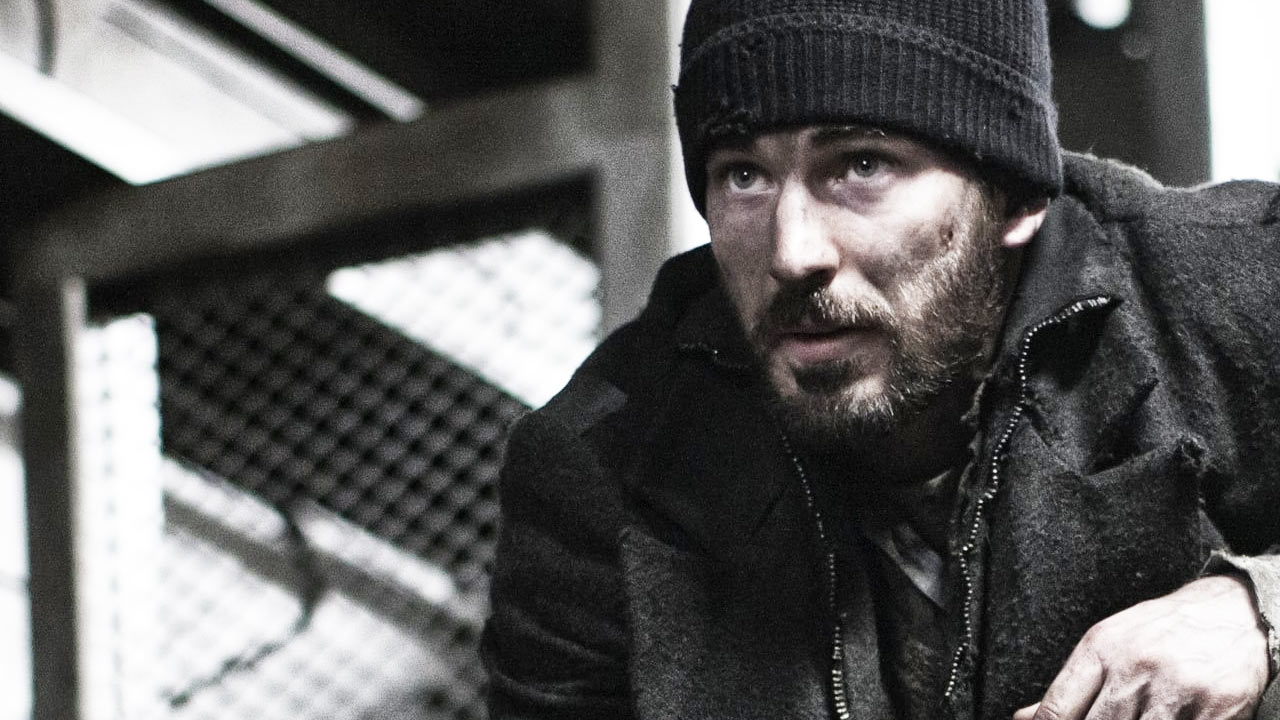
Snowpiercer (2013)
When filmmakers visualise class disparities, they often verticalise it: positioning the well-to-do literally above the poor (think Metropolis, High Rise, Elysium, The Platform). In Snowpiercer, a dystopian sci-fi set on a train carrying humankind’s last survivors, Bong Joon-ho flips the space to horizontal—with the woebegone at the tail of the vehicle and the affluent ahead of them. “Those bastards in the front section think they own us,” grumbles Edgar (Jamie Bell) to fellow pauper Curtis (Chris Evans) before the pair lead a revolt, spurred on by a revelation that the guards around them don’t have ammo in their guns.
In the middle of a bloody battle between the rebels and an army of creepy axe-wielding guards, the fight is paused while the guards countdown from 10 and chant “happy New Year!” Tilda Swinton visits later to call the rebels “filthy ingrates,” lecturing about “the misplaced optimism of the doomed.” This bizarre early fight scene precedes other surreal scenes, as Curtis pushes forward through various visually arresting spaces—including a garden, aquarium, swimming pool and night club.












